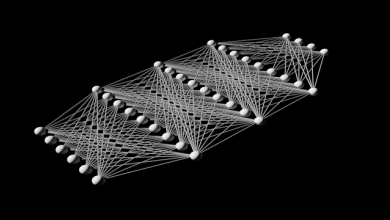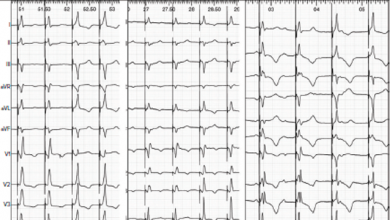Search results
Author(s):
Rahul G Muthalaly
,
Robert M Evans
Added:
3 years ago
Artificial intelligence (AI) has recently become a popular term in the technological world. AI refers to the simulation of human intelligence with the capacity for achieving goals within computers. Machine learning (ML) – a subtype of AI – refers to a statistical model that is able to independently learn to make inferences on new data based on data it has previously analysed. ML has markedly…
View more
Author(s):
Marco V Mariani
,
Agostino Piro
,
Domenico G Della Rocca
,
et al
Added:
3 years ago
Author(s):
Marek Jastrzębski
Added:
2 years ago
Body Surface Electrocardiographic Mapping for Non-invasive Identification of Arrhythmic Sources
Author(s):
Ashok J Shah
,
Meleze Hocini
,
Patrizio Pascale
,
et al
Added:
3 years ago
Article
Author(s):
Rutger R van de Leur
,
Machteld J Boonstra
,
Ayoub Bagheri
,
et al
Added:
3 years ago
Clinical research that uses artificial intelligence (AI) and big data may aid the prediction and/or detection of subclinical cardiovascular diseases by providing additional knowledge about disease onset, progression or outcome. Clinical decision-making, disease diagnostics, risk prediction or individualised therapy may be informed by insights obtained from AI algorithms. As health records have…
View more
Defining LBBB Patterns in CRT
Author(s):
Roderick Tung
,
Gaurav A Upadhyay
Added:
3 years ago
Article
Author(s):
Adam J Graham
,
Richard Schilling
Added:
2 years ago
Author(s):
Haipeng Tang
,
Shaojie Tang
,
Weihua Zhou
Added:
3 years ago
Cardiac resynchronisation therapy (CRT) is a widely-performed standard treatment for improving cardiac function and quality of life in patients with heart failure.1 After CRT, however, 30–40 % of patients do not experience improvements in left ventricular (LV) function and clinical symptoms.2–3 The key factors for increasing the response rate to CRT are identification of the optimal LV lead…
View more
Author(s):
Jonathan S Steinberg
,
David Slotwiner
Added:
3 years ago
Electrical Remodelling
Evidence Supporting Atrial Remodelling
The concept of electrical remodelling was first introduced in 1995 simultaneously by Wijffels et al.1 and Morillo et al.2 who demonstrated that once sustained atrial fibrillation (AF) was induced in goats, or rapid atrial pacing was performed in dogs, physiological changes occurred that favoured the maintenance of AF.3 This led to the…
View more
Author(s):
Nikhil Singh
,
Kegan James Moneghetti
,
Jeffrey Wilcox Christle
,
et al
Added:
3 years ago
Considerable evidence supports the importance that the autonomic nervous system (ANS) has regarding cardiovascular health and prognosis.1 Specific variables derived from heart rate (HR) and heart rate variability (HRV) at rest and with exercise help assess the status of the ANS. Interest has also peaked on the use of HRV to assess the quality of an exercise programme. Among the athletic…
View more

















